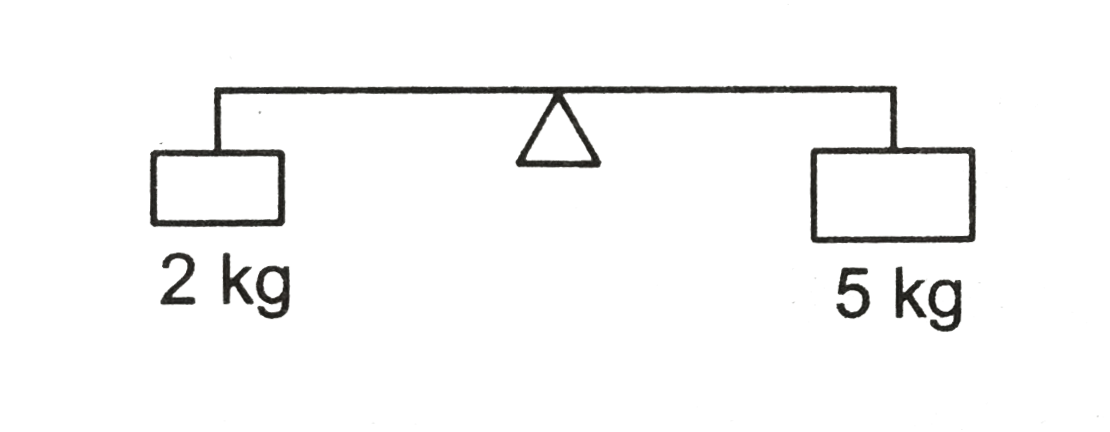Mass of a rod of length 4m is 3 kg. Its centre of gravity is 1.5 m from one of its ends. At the other end a mass of 8 kg is tied up. The rod is at a horizontal position. It is turned to a vertical position in such a way that the 8 kg mass goes to the top. What is the work done in changing the orientation of the rod ? Solution in Bengali
The correct Answer is:357 .7 J
Step by step video, text & image solution for Mass of a rod of length 4m is 3 kg. Its centre of gravity is 1.5 m from one of its ends. At the other end a mass of 8 kg is tied up. The rod is at a horizontal position. It is turned to a vertical position in such a way that the 8 kg mass goes to the top. What is the work done in changing the orientation of the rod ? by Physics experts to help you in doubts & scoring excellent marks in Class 11 exams.
Topper's Solved these Questions
- BOOK - CHHAYA PUBLICATIONCHAPTER - WORK AND ENERGYEXERCISE - PROBLEM SET -II47videos
WORK AND ENERGY
- BOOK - CHHAYA PUBLICATIONCHAPTER - WORK AND ENERGYEXERCISE - PROBLEM SET -II (Hots Numerical Problems)9videos
WORK AND ENERGY
- BOOK - CHHAYA PUBLICATIONCHAPTER - WORK AND ENERGYEXERCISE - EXERCISE (short Answer Type Questions-II)7videos
WORK AND ENERGY
- BOOK - CHHAYA PUBLICATIONCHAPTER - WBCHSE QUESTION PAPER -2019EXERCISE - SECTION - II ( GROUP -D)10videos
WBCHSE QUESTION PAPER -2019
Similar Questions
Applying a force of F =196 N upwards, a body of mass 10 kg is raised up to a height of 10 m. Find the work done by the force F and the work done against gravity. Note that the work done by the force F is more than the gravitational potential energy . Show how the law of conservation of energy is still obeyed.
03:27View SolutionA body, moving on a horizontal smooth plane with a velocity of 50cm⋅s−1, collides elastically with another stationary body of the same mass. After collision, if velocity of the 1st body becomes 30m⋅s−1, what is the velocity acquired by the 2nd ? Also show that the two bodies move at right angles to each other after collision.
13:15View SolutionGive an example of a non-conservative force. Explain whether the work done by this force contradicts the law of conservation of energy.
02:27View SolutionEquations of trajectory of a projectile are x=4 t, y=3t−5t2 , where x and y are in metre and t is in second . Find (i) maximum height attained by the projectille , (ii) horizontal range of the projectile .
04:28View SolutionA ligh rod of length 1 m is pivoted at its centre and two masses of 5 kg and 2 kg are hung from the ends as shown in the figure. Find the initial angular acceleration of the rod assuming that it was horizontal in the beginning.
 03:55View Solution
03:55View SolutionA uniform rod of mass M and length L is hinged at its end. The rod is released from its vertical position by slightly pushing it. What is the reaction at the hinge when the rod becomes horizontal, again vertical.
03:07View SolutionA uniform rod of length 4 m and mass 20 kg is lying horizontal on the ground. The work done in keeping it vertical with one of its ends touching the ground, will be -
05:56View SolutionA uniform rod of mass 20 Kg and length 1.6 m is piovted at its end and swings freely in the vertical plane. Angular acceleration of the rod just after the rod is relased from rest in the horizontal position is
04:29View SolutionA rigid rod of mass m & length l is pivoted at one of its ends. If it is released from its horizontal position, find the speed of the centre of mass of the rod when it becomes vertical.
06:03View SolutionA mass of 2 kg is kept at one end of a 10 cm long rod, and a mass of 5 kg at the other end. Find the point of suspension for the rod so that it remains horizontal. Neglect the weight of the rod.
View Solution1.4 मी लम्बी एक नगण्य द्रव्यमान की एक छड़ के सिरों पर 0.3 किग्रा व 0.7 किग्रा के द्रव्यमान स्थिति है छड़ की लम्बाई के लम्बवत अक्ष के परितः इसे नियत कोणीय चाल से घूर्णन कराया जाता है छड़ पर वह बिन्दु जिससे अक्ष को गुजरना चाहिए ताकि छड़ के घूमने के लिए आवश्यक कार्य न्यूनतम हो, होगा
View SolutionA light rod of length 1 m is pivoted at its centre and two masses of 5 kg and 2 kg are hung from the ends as shown in the figure. Find the initial angular acceleration of the rod assuming that it was horizontal in the beginning.
 View Solution
View SolutionTwo uniform rods A and B of lengths 5 m and 3m are placed end to end. If their linear densities are 3 kg/m and 2 kg/m, the position of their centre of mass from their interface is
View SolutionTwo uniform rods A and B of lengths 5 m and 3 m are placed end to end. If their linear densities are 3 kg/m and 2 kg/m, the position of their centre of mass from their interface is
01:47View SolutionA rod AB of length 10cm, has its mass per unit length varying from 1 kg/m (at end A) to 2kg/m (at end B). Find the distance of the centre of mass of the rod from the end B.
 03:16View Solution
03:16View Solution

